Anyone who fails their driving test will naturally be disappointed, but statistics from the Driver and Vehicles Standards Agency (DVSA) show that it is actually rather common. Every year, almost one in two learner drivers who’ve completed their driving lessons and attempt their practical driving test come away unsuccessful.
By analysing the number of tests conducted throughout the country alongside the number of passes, we can easily work out how many people fail their driving test each year:
Official DVSA Data on Practical Driving Tests 2007 to 2022 YTD:
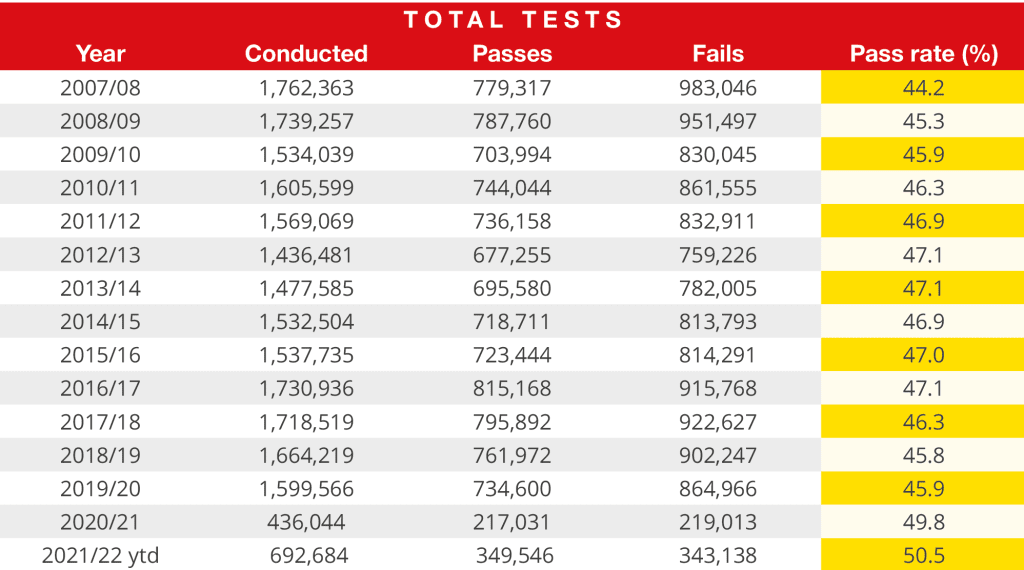
Looking at the figures between 2007 and 2020, an average of 864,152 learner drivers failed their driving test each year. Since the start of the pandemic, the number of tests conducted has fallen dramatically, as lessons and tests were suspended throughout various lockdown periods.
While the overall pass rate in these two years has actually increased, nonetheless over half a million people, 562,151 students, did not manage to pass their practical driving test during this time. Over the combined 15 year period, there have been a total of 11,796,128 unsuccessful driving test attempts!
How Many People Fail Their Driving Test By Gender?
While the DVSA’s overall summary data offers the most complete picture of the number of people who fail their driving test each year, looking at specific individual factors can help us to get a better understanding of the breakdown of driving test fails.
When looking at gender for example, we’ve seen a marked difference between males and females in terms of pass rates, with the average 15 year per attempt pass rate for males sitting at 50.2% compared to 43.7% for females.
This has meant that between 2007 and 2022, while males accounted for 48% of all tests conducted, they were responsible for only 45% of all driving test fails within this time period. Conversely, females accounted for 52% of all practical tests conducted, but made up 55% of those who fail their driving test attempt.
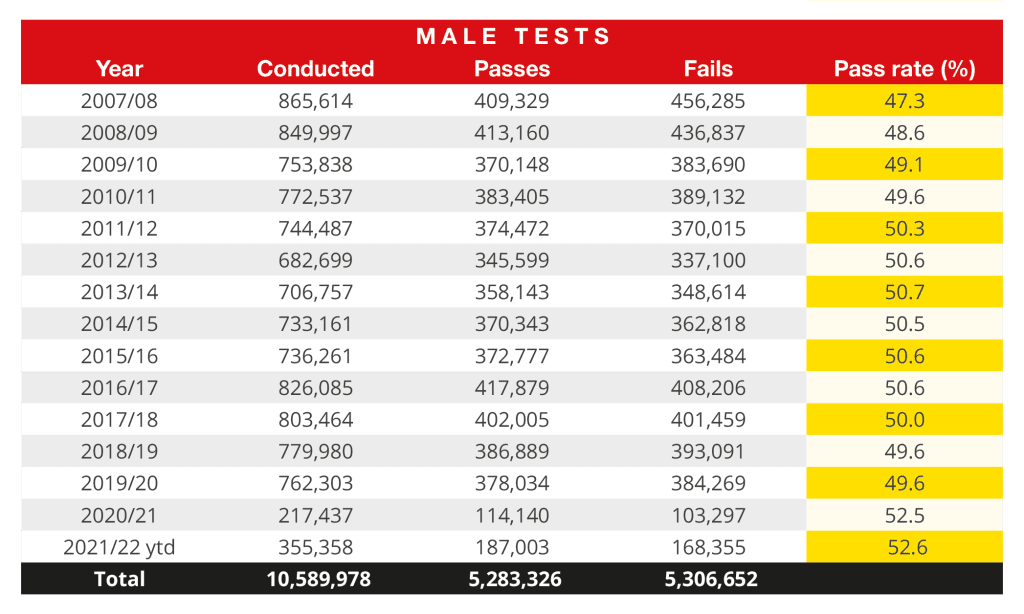
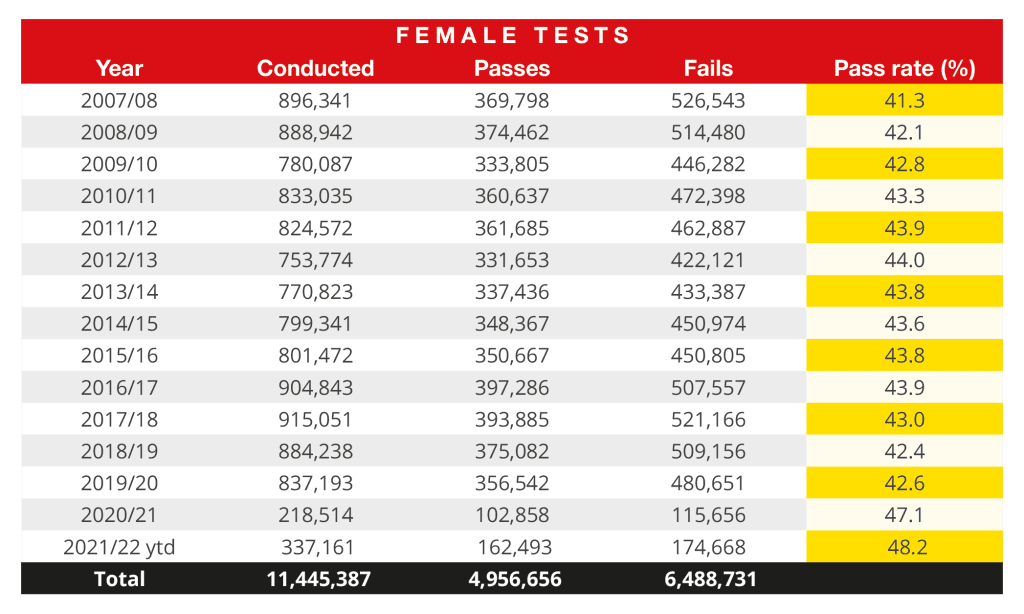
The Number Of Driving Test Fails By Region
While looking at gender highlights one trend, when breaking down how many people fail their practical exam by test centre, we can see much bigger swings from one area to another.
Although 305 driving test centres were operating across the UK last year, the top 12 test centres in terms of pass rate were all based in Scotland, while 10 out of the bottom 12 test centres are all based in inner cities across England.
This can be partly explained by the fact that, in general, test centres in rural areas typically experience higher pass rates, whereas those in residential cities do worse.
Top 12 Driving Test Centre Pass Rates:
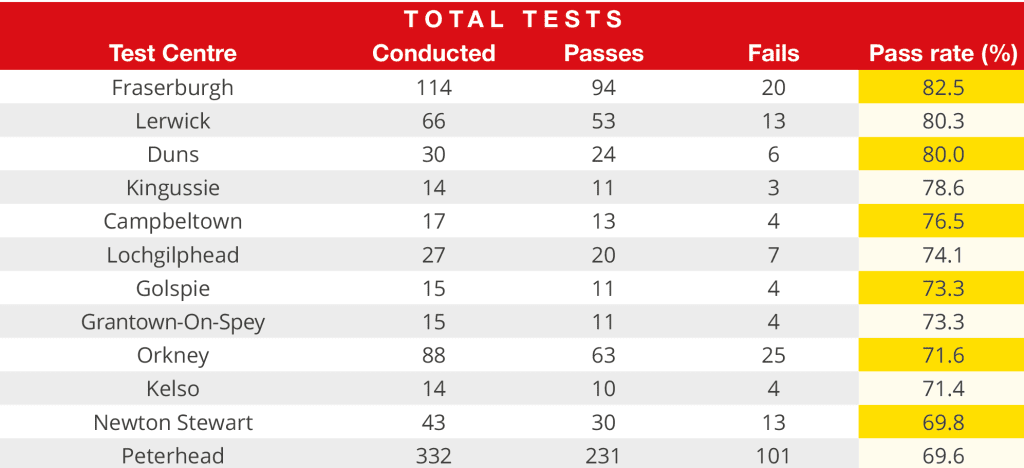
Bottom 12 Driving Test Centre Pass Rates:
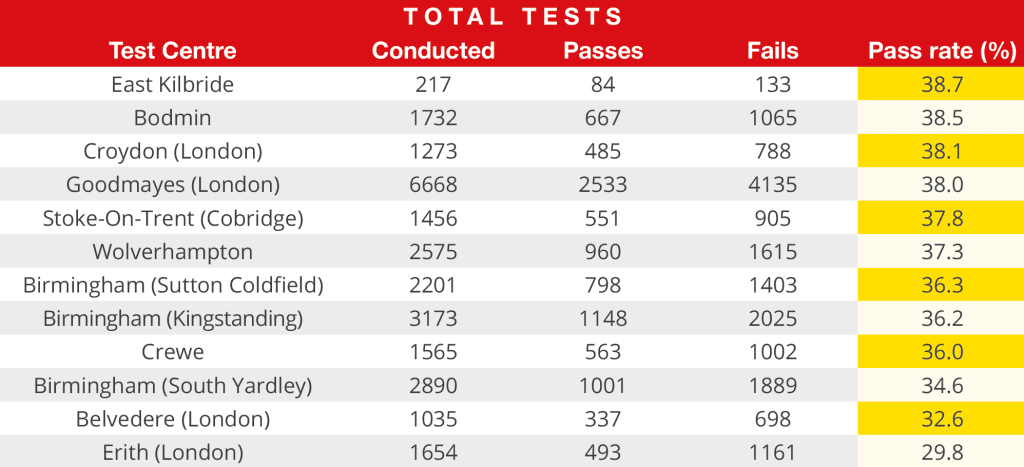
198 of the 305 test centres, a figure of 64.9%, had a pass rate above one in two. With 52.5% of all driving tests conducted in 2021 at these 198 test centres, we can clearly see that some areas of the country are significantly harder than others when it comes to obtaining your driving licence.
As several of the test centres that are based in locations that are difficult to learn to drive in had large numbers of people taking their practical exams, the overall national pass rate was pulled down towards 49.8%.
For instance, Goodmayes test centre in London had the most learners fail their driving test in 2021, with 4135 individual failed attempts, while on the other end of the spectrum, in Kingussie, Scotland, only 3 people (out of a total of 14) did not quite make the mark.
In terms of individual test centres, the lowest recorded pass rate in 2021 went to Erith Test Centre, based on the outskirts of South East London, where only 29.8% of the learner drivers who sat their test succeeded.
Conversely, 94 of the 114 students who sat their test at Fraserburgh test centre achieved a pass, a high of 82.4%, meaning the United Kingdom saw a 52.6% difference between its highest and lowest performing areas.
Driving Test Fails By Age
While both gender and location have been shown to affect how many people fail their driving test, there is one factor that looks to trump them both in terms of influence – age.
Data provided by the DVSA between April 2020 and March 2021 shows huge discrepancies in pass rates between younger and older citizens, with those 17 and under almost doubling their chances of driving test success. The former group attained a pass rate of 63.4%, which compares significantly favourably to the 32.7% of over 60s who gained their licence.
Interestingly, the statistics show that the difference in pass rates between the under 17s (63.5%) and those aged 18 (53.7%) is a whopping 10% gap, which extends by a further 5% for those aged 19 (48.2%).
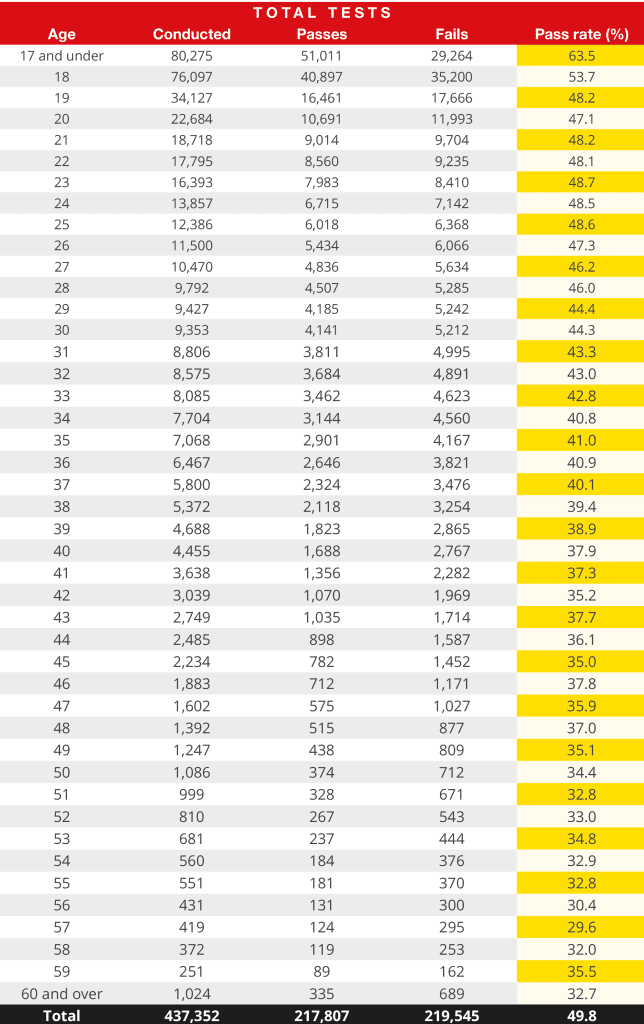
While as a collective, the under 17s made up the smallest percentage of fails within their respective age group, in terms of the overall number, they made up the second highest number of driving test fails, with 29,264. This is predominantly due to the fact that they comprised 18.3% of all driving tests conducted in 2021.
This analysis highlights, in the same way as the regional data, that as a very small number of age groups with high pass rates make up a large proportion of the tests conducted (with those under 21 comprising 50% of all driving tests within this period), the pass rate is pulled to 49.8%.
How Many People Fail Their Driving Test By Reason
While the DVSA puts out great statistics to interpret in terms of the number of test fails, alongside a breakdown by gender, location and age, unfortunately this hasn’t been further broken down in terms of the number of unsuccessful driving tests by reason.
However, there have been several publications and online resources which highlight the top 10 reasons that learner drivers fail their driving test, which are listed as follows:
- Junctions (observation)
- Mirrors – (change direction)
- Junctions (turning right)
- Response to signals (traffic lights)
- Control (steering)
- Response to signals (traffic signs)
- Response to signals (road markings)
- Move off (safely)
- Positioning (normal driving)
- Move off (control)
Once you’ve mastered the above driving faults and know everything you need to learn to drive, when it is finally time to sit your practical test, you may just find yourself asking your instructor for a trip to Fraserburgh, rather than your local test centre!

